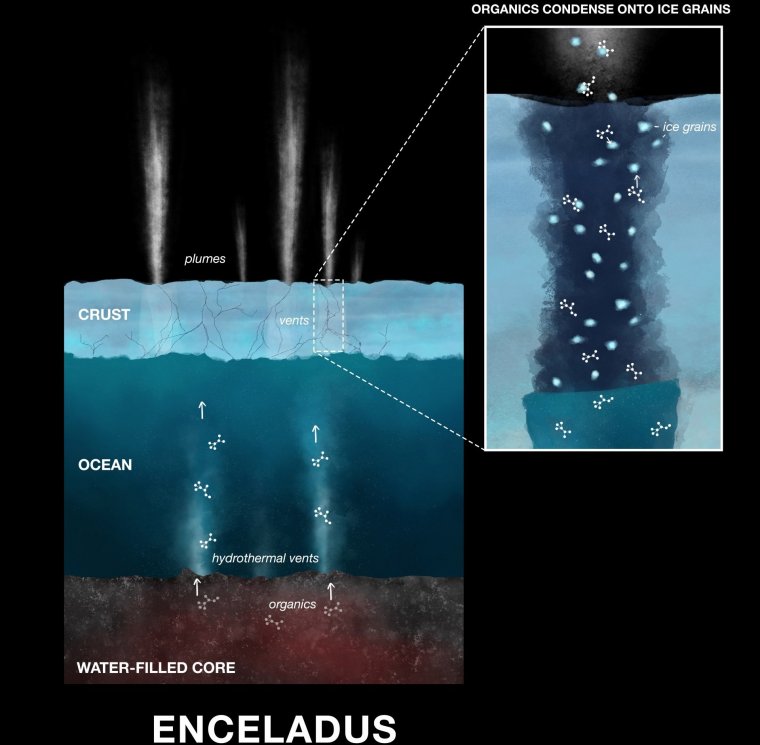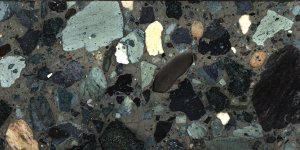| News / Science News |
New Organic Compounds Found in Enceladus Ice Grains
New kinds of organic compounds, the ingredients of amino acids, have been detected in the plumes bursting from Saturn's moon Enceladus. The findings are the result of the ongoing deep dive into data from NASA's Cassini mission.

This illustration shows the process of organic compounds making their way onto ice grains emitted in plumes from Saturn's moon Enceladus. Photo: NASA/JPL-Caltech
Powerful hydrothermal vents eject material from Enceladus' core, which mixes with water from the moon's massive subsurface ocean before it is released into space as water vapor and ice grains. The newly discovered molecules, condensed onto the ice grains, were determined to be nitrogen- and oxygen-bearing compounds.
On Earth, similar compounds are part of chemical reactions that produce amino acids, the building blocks of life. Hydrothermal vents on the ocean floor provide the energy that fuels the reactions. Scientists believe Enceladus' hydrothermal vents may operate in the same way, supplying energy that leads to the production of amino acids.
"If the conditions are right, these molecules coming from the deep ocean of Enceladus could be on the same reaction pathway as we see here on Earth. We don't yet know if amino acids are needed for life beyond Earth, but finding the molecules that form amino acids is an important piece of the puzzle," said Nozair Khawaja, who led the research team of the Free University of Berlin.
Although the Cassini mission ended in September 2017, the data it provided will be mined for decades. Khawaja's team used data from the spacecraft's Cosmic Dust Analyzer, or CDA, which detected ice grains emitted from Enceladus into Saturn's E ring.
The scientists used the CDA's mass spectrometer measurements to determine the composition of organic material in the grains.
The identified organics first dissolved in the ocean of Enceladus, then evaporated from the water surface before condensing and freezing onto ice grains inside the fractures in the moon's crust, scientists found. Blown into space with the rising plume emitted through those fractures, the ice grains were then analyzed by Cassini's CDA. (NASA)
YOU MAY ALSO LIKE





